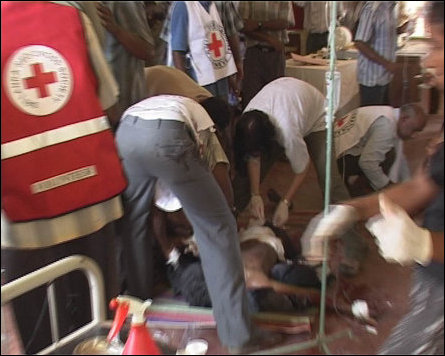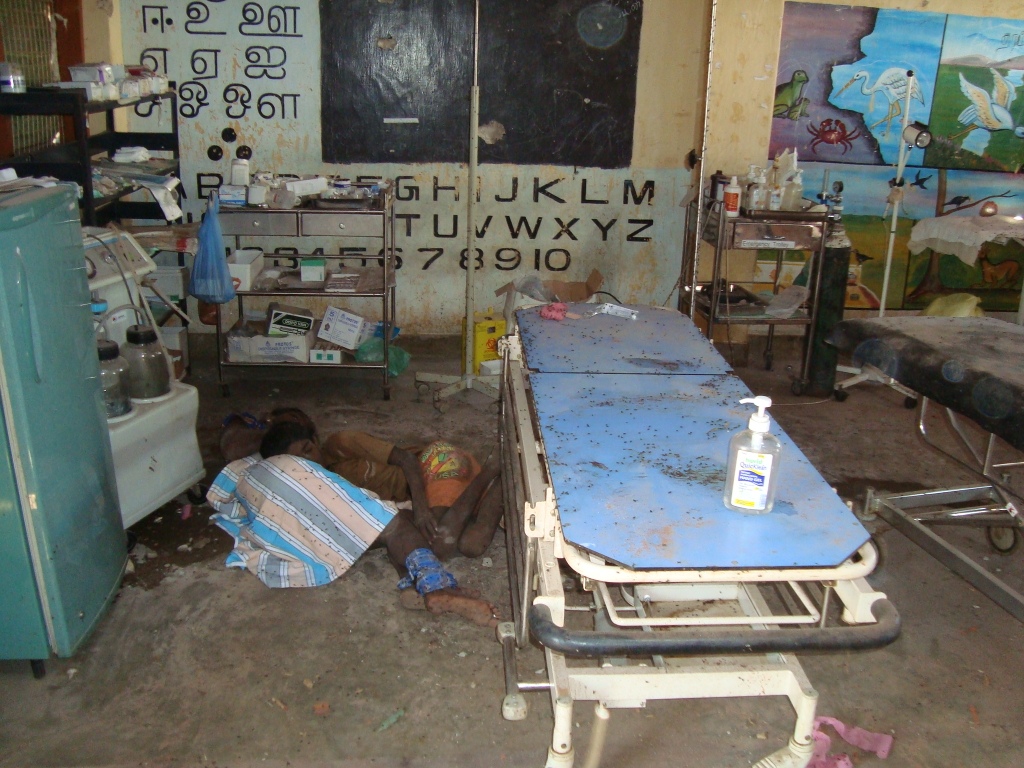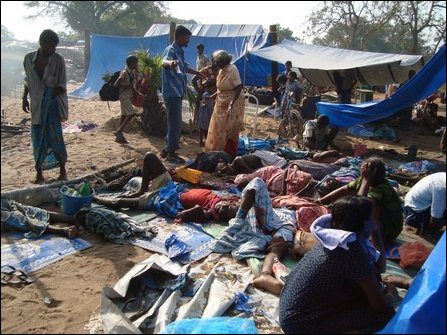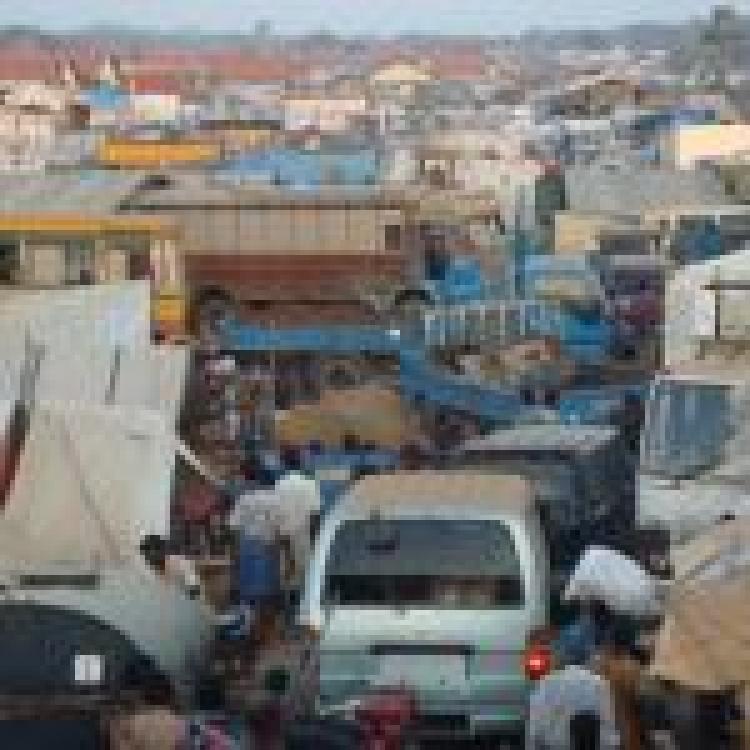
ICRC staff in the aftermath at an attack on PTK hospital.
As reports of a Russian airstrike on a hospital in Mariupol, Ukraine begin to surface, we take a look at what international law states on the targeting of hospitals and on when they have been hit in Sri Lanka.
What does the law say?
Under International Humanitarian Law (IHL) and the Geneva Conventions, attacks on medical facilities are prohibited.
IHL is clear about the protected status of medical facilities, the wounded and sick, and medical transports, even in the midst of armed conflict. The First and Fourth Geneva Conventions provide provisions for the setting up of hospitals and safety zones, providing protection for medical personnel and facilities.
In 1970, the UN General Assembly adopted Resolution 2675, which stipulates that a hospital zone or similar refuge should not be the object of military operations.
However, hospitals continued to be targeted, and following the bombing of an MSF hospital in Kunduz, Afghanistan, the UN Security Council passed Resolution 2286 strongly condemning attacks against medical facilities and personnel in conflict situations.
When has it happened in Sri Lanka?
In Sri Lanka, hospitals have repeatedly been targeted by the armed forces, including with cluster munitions.

The aftermath of an attack on a makeshift Intensive Care Unit (ICU), May 2009.
We have reproduced extracts from the OHCHR Investigation on Sri Lanka, which examined the final stages of the armed conflict, on when hospitals were targeted.
“The [No Fore Zones] NFZs created by the Government did not present safe havens for civilians. Almost immediately after their creation, the NFZs, including protected civilian objects, such as hospitals, came under sustained fire from the Sri Lankan security forces.”
“Within the LTTE-controlled areas, including the NFZs, there were a number of medical facilities. The hospitals were mostly staffed by Government employees, and marked with the Red Cross emblem – for example painted on the roof or clearly visible on flags. OISL has viewed one clip of UAV footage clearly showing the Red Cross emblem on the roof of PTK hospital. Satellite imagery also confirms that hospital buildings referred to in this section were clearly marked with the Red Cross emblem.”
As the [Sri Lankan Army] SLA advance progressed, medical facilities were often relocated, into schools and, towards the end of the conflict, tents and other makeshift structures. The relocated sites of medical and other facilities were also hit during shelling despite being clearly marked by the emblem. The transfer of seriously ill patients was sometimes carried out in the most precarious circumstances. The attacks killed and injured patients receiving treatment. As conditions worsened, the capacity of medical staff to treat patients became even more stretched, yet medical professionals were determined to fulfil their duties to provide treatment at great risk to themselves. Medical personnel were also among those who were killed in the shelling. Continued shelling, including on or near the roads leading up to the hospitals often prevented immediate access to civilians injured in other attacks in the area.
Letters seen by OISL, consistent with witness accounts, including from United Nations and humanitarian workers, indicate that GPS coordinates of most hospital and other humanitarian facilities, including when they were relocated due to fighting, were transmitted to the Government, the SFHQ in Vavuniya and other Sri Lankan security forces, as well as the LTTE, to ensure that these facilities would be protected from attack.
In at least two instances, attacks on Vallipunam and Udayarkaadu hospitals occurred shortly after the coordinates were relayed. Witnesses also told OISL that hospital and humanitarian workers alerted military and Government officials to the fact that hospitals were being shelled, and called for the shelling to stop. In some instances, the shelling from SLA positions continued, in others the firing was adjusted, suggesting that the SLA was able to control where the shells hit.
According to witnesses, at least one makeshift (non-government) medical facility stopped using the Red Cross sign in an effort to remain hidden and decrease the likelihood of attack. This began shortly after the attacks on Udayarkaadu hospital in January 2009. The witness said that the facility was not shelled while it was in operation.
The information gathered by OISL in the course of its investigation suggests, however, that the attacks were not isolated incidents but part of a pattern where the SLA not only failed to take adequate measure to ensure that protected facilities are not hit but, in some cases, may have deliberately targeted the facilities.

A makeshift hospital, May 2009.
Whole sections of the report are devoted to the attacks on Kilinochchi hospital, Mullaitivu hospital, Vallipunam hospital, Udayaarkaadu hospital, PTK hospital, Putumattalan hospital, Valayarmadam hospital, the last functioning Mullivaikkal hospitals and more.
One hospital worker described the situation in one of the hospitals by 4 February 2009 as “carnage... the likes of which she had never seen before".
As the OISL reports, by 14 May 2009, the last remaining makeshift hospital stopped functioning.
To date, no one has been held accountable for any of the attacks on medical facilities.

